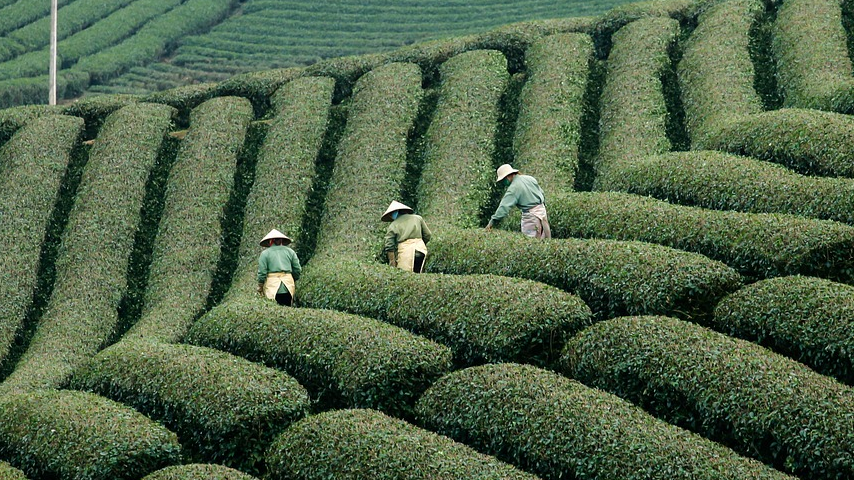
Introduction
In the face of growing challenges such as climate change, resource depletion, and population growth, the need for sustainable farming practices has never been more urgent. Regenerative agriculture, which goes beyond sustainable practices to restore soil health and biodiversity, has emerged as a promising solution to ensure long-term food security and a stable crop outlook. By adopting regenerative methods, farmers can not only reduce their environmental footprint but also enhance crop yields and resilience. This approach can mitigate crop risks, increase soil fertility, and improve overall agricultural productivity, ultimately contributing to a more secure food system.
In this content, we will explore how regenerative agriculture practices are reshaping the future of crop production, their impact on food security, and how these methods can positively affect long-term crop outlooks. We will also address the importance of crop risk management in maintaining sustainable farming systems and ensuring a stable food supply.
What is Regenerative Agriculture?
Regenerative agriculture refers to farming practices that go beyond sustainability to restore and regenerate the health of the soil, ecosystem, and local biodiversity. The central focus of regenerative agriculture is soil health, as healthy soil plays a vital role in supporting plant growth, water retention, and carbon sequestration. Key principles of regenerative agriculture include:
- Minimal tillage or no-till farming: Reducing soil disturbance to maintain soil structure, increase organic matter, and promote soil microorganisms.
- Cover cropping: Growing crops that cover and protect the soil, reducing erosion, enhancing soil fertility, and supporting biodiversity.
- Crop rotation and polyculture: Planting a variety of crops in rotation to break pest cycles, improve soil health, and increase biodiversity.
- Composting and organic fertilization: Using organic materials to enrich the soil with nutrients and increase its water-holding capacity.
- Integrating livestock: Incorporating animals into farming systems to cycle nutrients and improve land health.
These practices collectively enhance soil fertility, increase biodiversity, and create resilient farming systems capable of withstanding environmental stressors like droughts and floods, thus contributing to improved crop outlooks and food security.
Impact on Long-Term Crop Outlooks
The long-term outlook for crops is deeply tied to the health of the soil and the sustainability of farming practices. Conventional farming methods, which often rely on monoculture cropping, excessive tillage, and synthetic fertilizers, can degrade soil quality, reduce biodiversity, and increase susceptibility to pests and diseases. Over time, this leads to diminishing returns and a less stable crop outlook.
By adopting regenerative agriculture, farmers can reverse the damage caused by conventional practices and build a resilient, sustainable farming system. Here are some key ways regenerative agriculture impacts the long-term crop outlook:
1. Improved Soil Health and Fertility
Soil is the foundation of agriculture, and its health directly affects crop yields. Regenerative farming practices focus on building soil organic matter, which improves soil structure, water retention, and nutrient availability. Healthy soil also supports a diverse range of microorganisms that help break down organic matter, making nutrients more accessible to crops.
- Soil fertility: By using organic amendments such as compost, cover crops, and reduced tillage, regenerative agriculture increases the soil’s nutrient density, reducing the need for synthetic fertilizers. This leads to healthier crops that are more resistant to pests and diseases.
- Soil carbon sequestration: Regenerative agriculture practices help sequester carbon in the soil, mitigating the effects of climate change while improving soil health. Healthy soils act as carbon sinks, capturing and storing atmospheric carbon dioxide, which helps to reduce greenhouse gas emissions.
2. Enhanced Resilience to Climate Change
Climate change poses significant risks to crop production, including increased droughts, flooding, and temperature extremes. Regenerative agriculture enhances the resilience of farming systems by improving soil health, increasing biodiversity, and fostering ecosystems that can withstand environmental stresses.
- Water retention: Regenerative farming practices improve the soil’s ability to retain water, reducing the risk of crop failure during periods of drought. Cover crops and no-till practices create a sponge-like effect in the soil, helping to capture rainwater and store it for dry periods.
- Flood resistance: Healthy soils with improved structure and organic matter content are better able to absorb and drain water, reducing the risk of flooding during heavy rainfall.
- Temperature regulation: Regenerative agriculture increases the diversity of plants and animals on the farm, creating microclimates that can buffer temperature extremes, making crops less vulnerable to heat stress.
3. Diversification of Crops and Reduced Pest Pressure
Regenerative agriculture promotes crop rotation, polyculture, and agroforestry, which increase biodiversity and break pest and disease cycles. This reduces the need for chemical pesticides and herbicides, making farming systems more resilient to pest outbreaks.
- Reduced reliance on chemical inputs: By cultivating a diverse range of crops and using natural pest control methods, farmers reduce their reliance on synthetic chemicals, leading to lower production costs and less environmental pollution.
- Improved crop resilience: A diverse range of crops and the use of companion planting can create natural pest deterrents, reducing the impact of pests on yields.
4. Increased Yield Stability
Regenerative agriculture not only improves yields over time but also stabilizes crop production. By fostering a healthy, resilient farming ecosystem, regenerative practices help mitigate yield volatility caused by weather extremes, pests, or diseases.
- Consistent yields: Farms that use regenerative practices tend to experience more stable yields compared to conventional farms, as healthy soil and diverse ecosystems are less vulnerable to environmental shocks. The resilience built into the system ensures that crops are better able to cope with unpredictable conditions.
- Long-term profitability: By reducing dependency on costly inputs like chemical fertilizers and pesticides, regenerative agriculture can enhance profitability over the long term, ensuring that farming remains economically viable.
Contribution to Food Security
Food security is a critical issue facing the global population, particularly as the world’s population continues to grow, and the pressure on agricultural systems increases. Regenerative agriculture offers a path forward in securing food for future generations.
1. Sustainable Production for a Growing Population
As the global population approaches 10 billion by 2050, agricultural systems must become more efficient, sustainable, and resilient to meet food demand. Regenerative farming practices provide a means of increasing agricultural productivity while maintaining environmental balance.
- Sustainable intensification: Regenerative agriculture allows for higher productivity without depleting resources or damaging ecosystems. By improving soil fertility, increasing water retention, and diversifying crops, regenerative farming can meet the demand for food without compromising future production potential.
2. Local Food Systems and Resilience
Regenerative agriculture fosters local food production systems by reducing dependence on global supply chains. By focusing on growing diverse crops that are suited to local conditions, regenerative farmers can help strengthen food sovereignty and resilience in their communities.
- Empowering local farmers: Regenerative agriculture offers smallholder farmers a path to increase their productivity, reduce their reliance on costly inputs, and improve their income, thus enhancing food security at the local level.
- Reducing food waste: By improving the resilience and productivity of farming systems, regenerative agriculture can reduce food loss and waste, as crops are less susceptible to disease, pests, and environmental stressors.
Crop Risk Management and the Role of Regenerative Practices
Effective crop risk management involves identifying, assessing, and mitigating risks that affect crop production. By integrating regenerative practices into crop management strategies, farmers can reduce risks associated with soil degradation, pests, diseases, and climate change.
- Diversified risk management: Regenerative agriculture provides farmers with a more diversified approach to risk management by increasing the biodiversity of their crops and farming practices. This makes their farms less vulnerable to single points of failure, such as pest outbreaks or extreme weather events.
- Improved planning and forecasting: The use of regenerative practices can help farmers better anticipate risks and adapt to changing environmental conditions. By monitoring soil health, weather patterns, and crop performance, farmers can make more informed decisions about planting, irrigation, and pest management.
Conclusion
The adoption of regenerative agriculture practices offers numerous benefits, including improved soil health, enhanced climate resilience, increased crop diversity, and stable yields. These practices provide a sustainable pathway for ensuring long-term crop outlook and food security, particularly as the global population grows and climate challenges intensify. Regenerative agriculture helps manage crop risk by building resilience into the farming system, reducing reliance on external inputs, and ensuring a stable, diversified food supply for future generations.
By incorporating regenerative methods into mainstream agricultural practices, we can create a more sustainable, productive, and secure food system that supports both people and the planet.





Leave a Reply